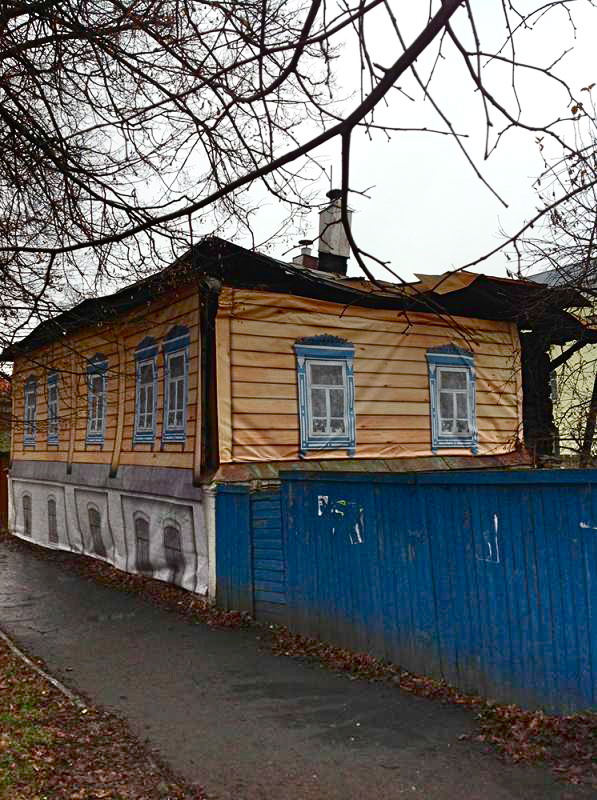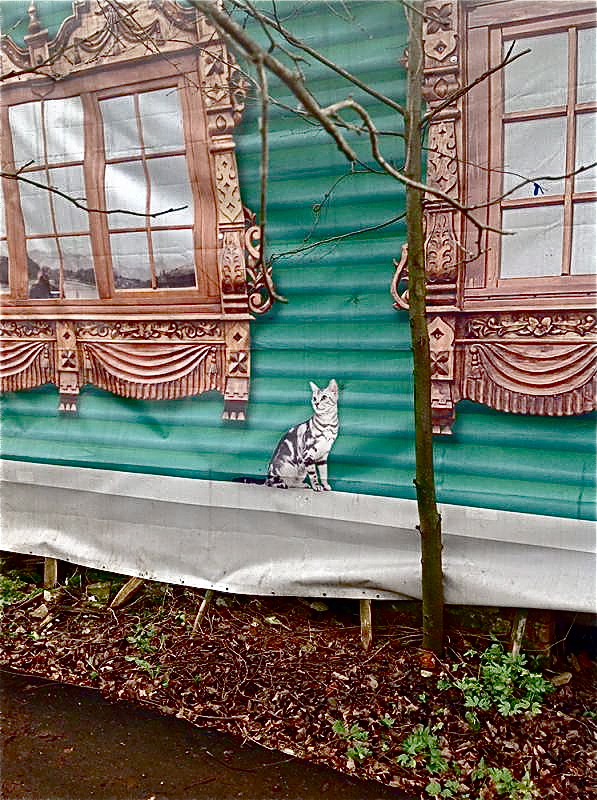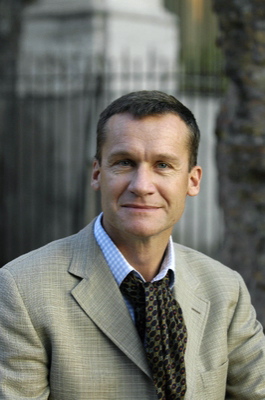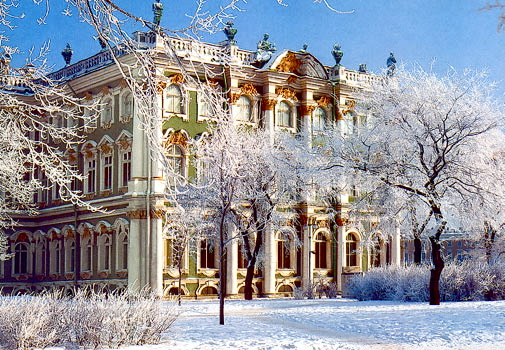Note: Andrei Makine’s Dreams of My Russian Summers was WINNER of both the Prix Goncourt and the Prix Medicis.
“[Oleg] knew [Catherine]’s political views, what she read, the personalities of the people she corresponded with, her carnal cravings (the ‘uterine rage’ derided by so many biographers)…her preference for riding astride a horse rather than side-saddle…Everything…except that often this ‘everything’ seemed strangely incomplete. Perhaps the key to the enigma could be found in [her] naïve observation that: ‘The real problem in my life is that my heart cannot survive for a single moment without love.’ ” –Filmmaker Oleg Erdmann on his film subject, Catherine the Great.
 In a metafictional novel which ranges widely over almost three centuries of Russian history, author Andrei Makine, a Russian émigré who has lived in France since 1987, recreates the life of a young Russian author/filmmaker who finds that the concept of creativity in the world in which he lives must always bend to the will of someone else – the censors, a hired director, or the tastes of the public – if his work is to survive. Oleg Erdmann, his author/main character, is the son of German parents who emigrated to Russia, where Oleg was born. His father was never able to cope with the difficulties he faced as the head of an immigrant family in a country which did not admit him into its mainstream, and he spent most of his spare time escaping his personal problems by painstakingly creating a detailed model of a giant castle, elaborate and reminiscent of the castles from the eras of Peter the Great and his successors – the Peterhof, the Winter Palace, and the Oranienbaum. Whenever serious problems would arise in his daily life, his father would say, softly, “This is all happening to me because of that little German girl who became Catherine the Great.”
In a metafictional novel which ranges widely over almost three centuries of Russian history, author Andrei Makine, a Russian émigré who has lived in France since 1987, recreates the life of a young Russian author/filmmaker who finds that the concept of creativity in the world in which he lives must always bend to the will of someone else – the censors, a hired director, or the tastes of the public – if his work is to survive. Oleg Erdmann, his author/main character, is the son of German parents who emigrated to Russia, where Oleg was born. His father was never able to cope with the difficulties he faced as the head of an immigrant family in a country which did not admit him into its mainstream, and he spent most of his spare time escaping his personal problems by painstakingly creating a detailed model of a giant castle, elaborate and reminiscent of the castles from the eras of Peter the Great and his successors – the Peterhof, the Winter Palace, and the Oranienbaum. Whenever serious problems would arise in his daily life, his father would say, softly, “This is all happening to me because of that little German girl who became Catherine the Great.”
Determined to write a screenplay about Catherine the Great, years later, Oleg goes way beyond the limits of the usual biography, questioning not only Catherine’s life and her decisions but also the very nature of love and how one achieves it, using Catherine’s lengthy affairs with over a dozen men to expand the scope of his screenplay into an examination of reality and imagination in life, love, and art. To accomplish this, author Makine creates an experimental novel, its nature clear from the opening chapter in which a scene created by Erdman is being filmed for TV. A great mirror divides a salon from the alcove behind it, and it is raised and lowered by a lever controlled by Catherine herself. On the salon side, Catherine conducts audiences at her desk, pen in hand, meeting and conducting royal business with the chancellor, ambassadors, field marshals, kings, and writers. On the other side waits her naked lover of the hour. The instant her audience is over, Catherine raises the lever (and mirror) and rushes to greet her lover, enjoying his favors, then scurrying back behind the mirror to the salon with split-second precision before her next audience begins and a new lover makes his way secretly behind the mirror. As one envisions the timing necessary, the scene resembles a slapstick bedroom comedy.
With no transition between this and other early scenes, new characters are added to the mix. Catherine’s list of accomplishments and her equally long list of lovers between 1752, when she was twenty-three and 1786, when she was fifty-seven, are inserted in the next chapter, followed by references to Oleg’s first film, his period spent on the blacklist, then the surprising rehabilitation of his reputation. His current work, which is not identified by time period, but which we learn in Part IV is probably during the time of Brezhnev, creates a maelstrom of action and characters, all swirling, providing bits and pieces of information needed to put the entire novel into perspective, as Catherine rules through sex and violence – at least in Oleg’s film series, now being presented on Russian public television. Just as the reader may become confused by the lack of a clear time frame for the various episodes at the beginning of the novel, Oleg fears that “his detailed research into the labyrinths of History was [also] making Catherine’s life seem impenetrable, ambiguous.” Still, he “continued to hope that from the murky confusion of the archives a shining light would burst forth – some thrilling truth that went beyond History itself!”
The death of Catherine’s husband, Peter III, estranged since the beginning of their ill-fated marriage when she was fourteen and he was sixteen, remains a mystery throughout, as does the paternity of her son Paul. Was Tsar Peter III, murdered? A bulletin issued by Catherine reads, “On the seventh day of our accession to the throne we were advised that the former Tsar, Peter III, suffered another of his hemorrhoidal attacks…Aware of our Christian duty, we issued orders for him to be given the necessary medical attention…To our great sorrow, we learned that God’s will had put an end to his life.” Later, the reader learns that “Peter III loves ice cream, and it is by promising him this dessert that his murderers lure him into the trap.” Hemorrhoids or ice cream? Take your choice.

When Catherine goes to visit the Crimea, Potemkin makes sure that the dilapidated buildings there look better than they really are by building inexpensive facades over the ruination. In 2013, the Russian village of Susdal (above) created a “Potemkin village” using Photoshop and plastic sheeting because President Putin was coming to visit.
Gradually, the background and the foreground come together as the reader gains insights into Makine’s thinking while he continues both Oleg’s and Catherine’s stories. Catherine’s entrapment within the duties of Tsarina, and her inability ever to leave Russia, fade into the background as Oleg and Eva Sander, who is playing the part of “the older Catherine” in the wildly successful TV series, become close and he begins to share his own background. Reality vs. imagination merge as a main idea once again when Eva questions Oleg: “You said that for the tsarina love was simply a theatrical performance.” To which he responds that it was “a drama she acts in and applauds at the same time: I love and I am loved? Age will make her more humble…[Her] whole life took place in this ‘as if’…no man ever loved her.” Eventually, Oleg and Eva travel from Russia through Germany and Switzerland into Italy, following the maps of Lanskoy, Catherine’s greatest love, as all the plot lines of the novel come together. Both romantic and thoughtful, A Woman Loved stretches the boundaries of chronology and of the novel itself to make a final statement about fantasy and truth in matters of life, love and art. (Gracefully translated by Geoffrey Strachan)
ALSO reviewed here: Makine’s THE LIFE OF AN UNKNOWN MAN

Another Photoshopped covering in the “Potemkin village” created in the town of Susdal when Vladimir Putin was scheduled to visit in 2013.
Photos, in order: The author’s photo appears on http://lechouandesvilles.over-blog.com
Catherine the Great, in her thirties, painted by a follower of Giovanni Batista Lampi: http://www.gogmsite.net/
The Winter Palace in St. Petersburg was Catherine’s primary place of residence. http://stpetersburg-guide.com/
When Catherine goes to visit the Crimea, Potemkin makes sure that the dilapidated buildings there look better than they really are by building inexpensive facades over the ruination. In 2013, the village of Susdal in Russia created a “Potemkin village” using Photoshop and plastic because President Putin was coming for a visit. http://imgur.com/
The photo of the facade with the cat in the Potemkin village of Susdal is from http://destinationeconomy.com
ARC: Graywolf Press



